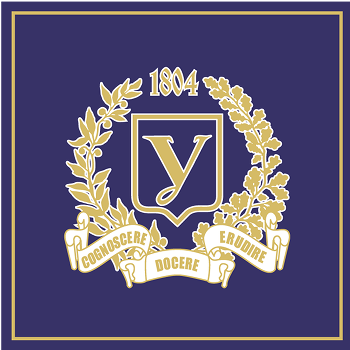Maksymenko N. V.
- 2018-1-2-:29
Agroecological Characterization of Sewage Sludge of Kharkov
The high rate of urbanization in the second half of the last century led to not only to the growth of urban population, but also as a result to increasing of amount of production wastes. During solving problems with mu-nicipal wastewater treatment inevitably the problem of disposal of sewage sludges is arised. Purpose is to pro-vide agroecological substantiation of possibility of application of sewage sludge of Kharkov in the agricultural sector. Methods. Analytical, laboratory modeling and statistics. Results. Agrochemical and ecological assess-ment of sewage sludge of WWTP "Bezlutskiy" at Kharkov are given, compliance with the requirements of nor-mative documents and substantiation of possibility of application of sewage sludge in the agricultural sector are established. Conclusions. It is found that sewage sludge contain sufficiently high amount of organic matter (more than 52 %) and major nutrients (total nitrogen and phosphorus) as well as acceptable concentrations of micronutrients and heavy metals according to the requirements of normative documents. Prospects of sewage sludge application as fertilizer is established.
- 2017-1-2-:27
Territorial structure of the land use of Kharkiv city
The purpose of the research is to establish and analyze the modern territorial structure of the nature management of the city of Kharkiv for further use in the process of its landscape planning. Methods. Visual decoding of satellite images, vectorization of raster images, analysis of topological correctness and mapometric calculation of areas. Results. On the basis of the analysis of satellite images of the city's landscape coverage and its subsequent classification according to the types of nature use, a cartographic work "Territorial structure of the nature management of the city of Kharkiv" was made. A quantitative assessment of the differentiation of different types of nature management has shown that the largest share is occupied by the residential type, represented by residential and public buildings - 39% of the city. The second type of nature use in Kharkiv is the protective and recreational type, which occupies 27% of the entire territory. Industrial type of nature management occupies 15% of the territory of the city of Kharkiv and is represented by industrial enterprises and mining quarries, which accounted for 98% and 2% respectively. The following territorial distribution is the agrarian type of nature use - 9% of the city's area. The largest share of agrarian type occupies the agricultural type of nature use - 67% of the total area of the type. All transport types of nature use together occupy 8% of the city, half of which are streets of local importance (51%). Conclusions. The main tendencies of spatial distribution of types of nature use are revealed, namely: industrial and residential types of nature management, form spatial "agglomerates", much of which tends to the neighborhood with the areas of aquatic nature use; Territories with an agrarian type of nature management are located on the city suburbs and represent "rudimentary" remnants of the "pre-urbanization" nature of nature use, the protective and recreational type has a unconnected territories and does not create the ecological environmental - stabilizing framework of the city. On the basis of the obtained data, the prospects and possibilities of using this approach to inventory cartographic works for the needs of landscape planning of territorial development of cities are presented.
- 2016-3-4-:26
Conflicts of Natural Pomeranian Landscapes in Nadmorsky Landscape Park (Poland)
Purpose. Evaluation of the nature-using conflict level in landscapes of the Nadmorsky Landscape Park. Methods. Methods of landscape and environmental planning implemented in expeditionary and laboratory conditions, using field techniques, mapping, geographic analysis and synthesis. Results. There are the results of expeditionary landscapes studies of the Nadmorsky Landscape Park (Poland), which is part of the Pomeranian group of landscape parks and is included in the European network Natura 2000. The author's technique of land-scape and environmental planning has been approved on the test areas (gmina Carvey and Hel Peninsula). Schematic maps of natural and natural-anthropogenic complexes on a scale of 1:10 000 have been drawn. The main sources of natural conflicts have been identified, conflicts matrixes have been compiled, the territory has been divided into zones, the areas with high, medium and low levels of conflict have been selected and corresponding schematic maps have been drawn. Conclusions. The area of the Nadmorsky Landscape Park has an average level of conflict nature-using, indicating the relative ecological balance in the park.
- 2016-1-2-:25
«Natural» And «Anthropogenic» In Creating The Landscape
The problem of different approaches to the modern interpretation of the concepts of «landscape», «antropohenic landscape» and «natural landscape». Based on the analysis of the new terminology of the authors track retrospective change that dominant processes in the landscape and their consequences. Ending debate is to offer authors use Landscape planning to harmonize current challenges in environmental management of areas of different functional purpose. Listed stages of landscape planning and their possible results.
- 2015-3-4-:24
Future of Landscape Planning as the Means for Optimization of Agroecosystems Functioning
It was determined that landscape planning as a means for optimizing the functioning of agricultural ecosystems has significant potential. The results of the inventory phase of landscape planning of Korobochkinskaya agricultural company were given as an example of updating the classic concept. There were shown the problems of adaptation of landscape planning under the framework research objectives of agroecosystems. It was found that relief and soil are the main landscape elements that need to be explored in the framework of a particular objective.
- 2013-3-4-:20
GIS – simulation of agricultural landscapes for the landscape planning
The article contains the results of research of agro-landscape of the Chuguevskogo district of the Kharkov area for the necessities of the landscape planning. The series of cartographic works are developed with applica-tion hybrid-type GIS – technologies which allow to draw conclusion in relation to the degree of anthropogenic transformation of agro-landscape. The row of optimization measures is offered for the settlement of loading on agro-landscape and improvements of ecological situation in a district.
- 2014-1-2-:21
Evaluation of the aquatic ecosystem river Kharkiv means of landscape planning
Using elements of landscape planning studies performed complex river basin river Kharkiv in the city. Analyzed the degree of compartmentalization and relief maps of exposure and angles territory. A map of anthropogenic urban landscapes. Allocated land basin with a dominant influence of various factors on the river ecosystem. An experiment to study the water quality in different periods of the functioning of the river. On the basis of the correlation calculation and construction of dendrite clusters allocated plots Basin, which developed recommendations to improve the man-made landscape of the river.
- 2014-3-4-:22
Structure and dynamics of atmospheric air pollution Kharkiv region
Based on the graphical analysis of the dynamics of pollutant emissions in the whole region, as well as, separate-ly, from stationary, mobile (vehicles) sources and from other mobile sources of pollution, found that the largest share of emissions into the atmosphere give stationary sources - namely, the production and electricity, gas and water. Analyze changes in emissions of each pollutant in the total emissions annually. It is found that the stationary sources emit more carbon dioxide emissions in mobile vehicles predominant sources of carbon oxide and by air, rail and other transport ejected more nitrogen oxide and carbon monoxide.
- 2015-1-2-:23
Spatial and temporal changes landscapes Vasischevskogo forestry and connected areas
The article contains the results of a comparative analysis of forest landscape differentiation Vasischivskogo forestry and connected areas, made through the establishment of the profile of landscape based on surveying in 1942 and advanced remote sensing data. It was found that 26.9% of the length profile of the landscape structure has changed, due to both anthropogenic pressure, and self-healing processes.

